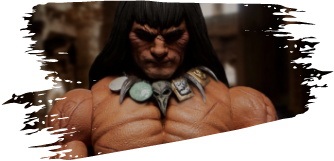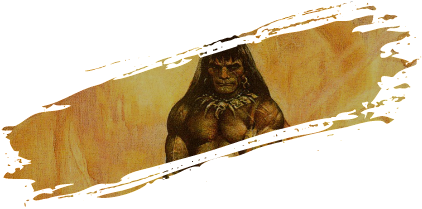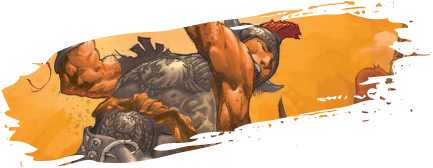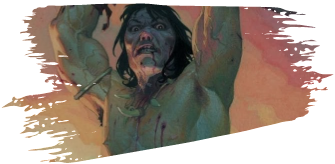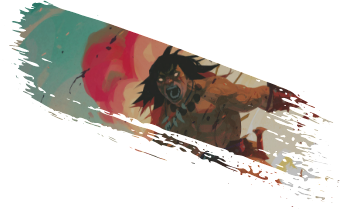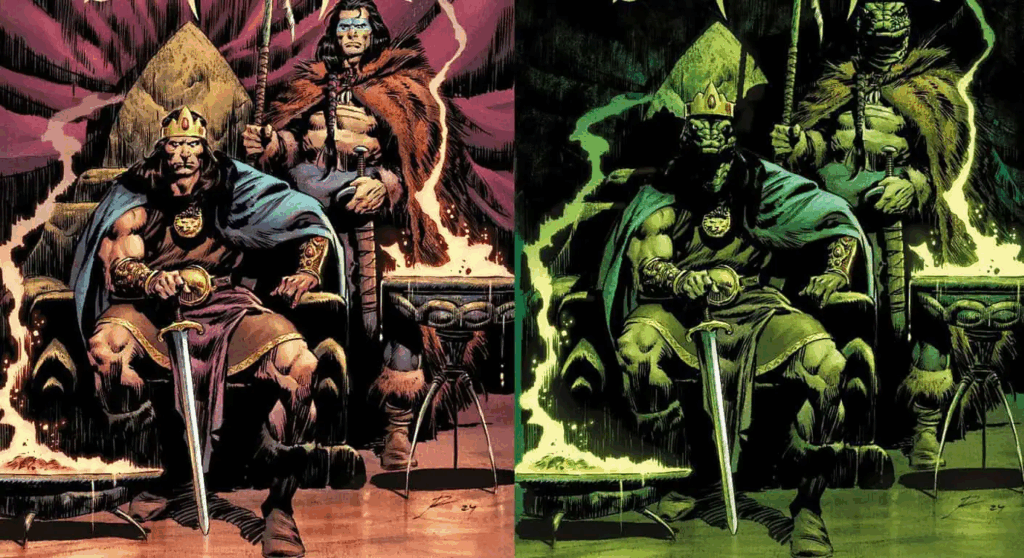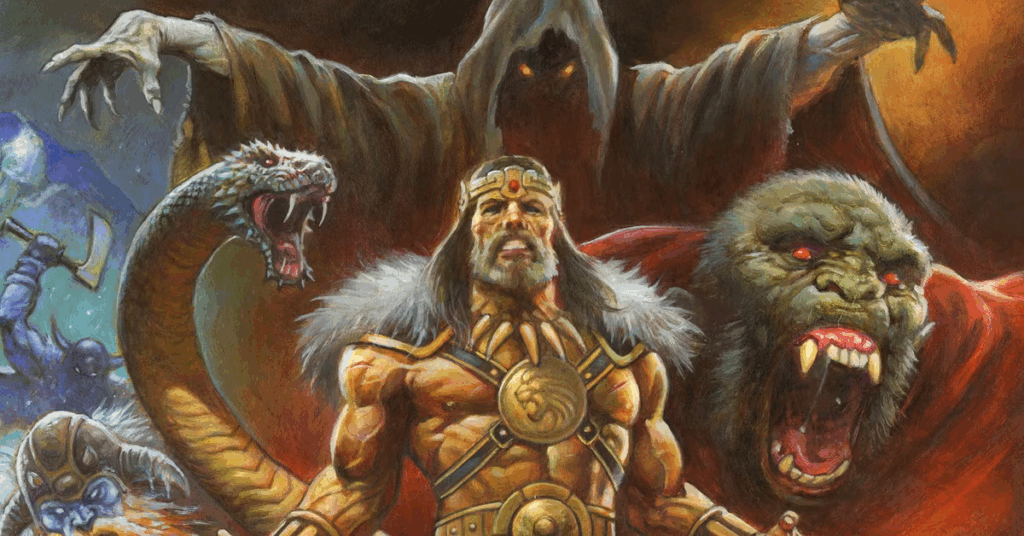
By Crom!
Has it really been two years?
With the release of Conan the Barbarian #25, it’s time to raise our ale horns and reflect on what has been nothing short of a renaissance for Robert E. Howard’s most iconic creation.
Since Titan Comics and Heroic Signatures joined forces in August 2023, we’ve witnessed restoration of the Cimmerian to his rightful place atop the sword-and-sorcery throne.
The Numbers, By Crom!
It seems inappropriate to not start with the elephant – or mammoth – in the room.
The first issue of Conan’s revival exceeded all expectations.
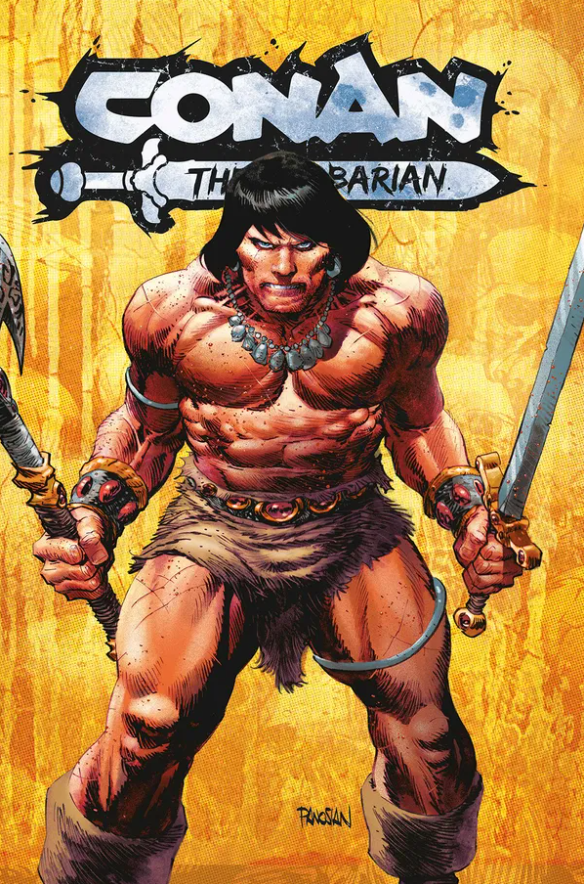
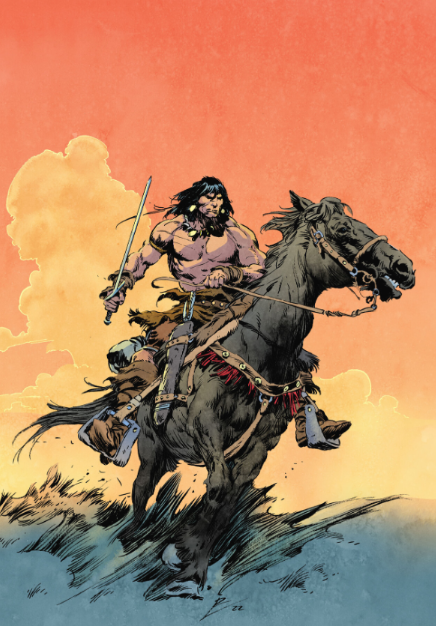
With over 80,000 copies flying off shelves initially and projections exceeding 100,000 after multiple printings, Conan the Barbarian #1 became the largest-selling single issue in Titan Comics’ entire history.
But here’s what those numbers represent more than a market correction: they were a mandate. After years of watching the legendary barbarian get absorbed into superhero team-ups and universe-spanning crossovers, fans voted with their wallets for a return to pure, undiluted sword-and-sorcery.
The critics heard that cry too.
Throughout the revival, it was not uncommon to see Conan comics earning 9.0+ ratings on Comic Book Roundup. The revival has been universally hailed as “everything [critics] could have hoped for,” with reviewers declaring the series was in “the best possible hands.” When professional critics – often jaded by decades of reboots and relaunches – start using phrases like “could have come straight from the tomes of yesteryear,” you know something special is happening.
Year One: When Titans Walked the Earth
“The Age Unconquered,” the 12-issue opening saga, was a statement of intent wrapped in a love letter to Howard purists. By immediately hurling Conan back through time to the Thurian Age to fight alongside King Kull of Atlantis, Jim Zub and the creative team made it crystal clear: this wasn’t going to be Conan-lite. This was deep-cut, lore-heavy, serious storytelling set in the Hyborian Age.




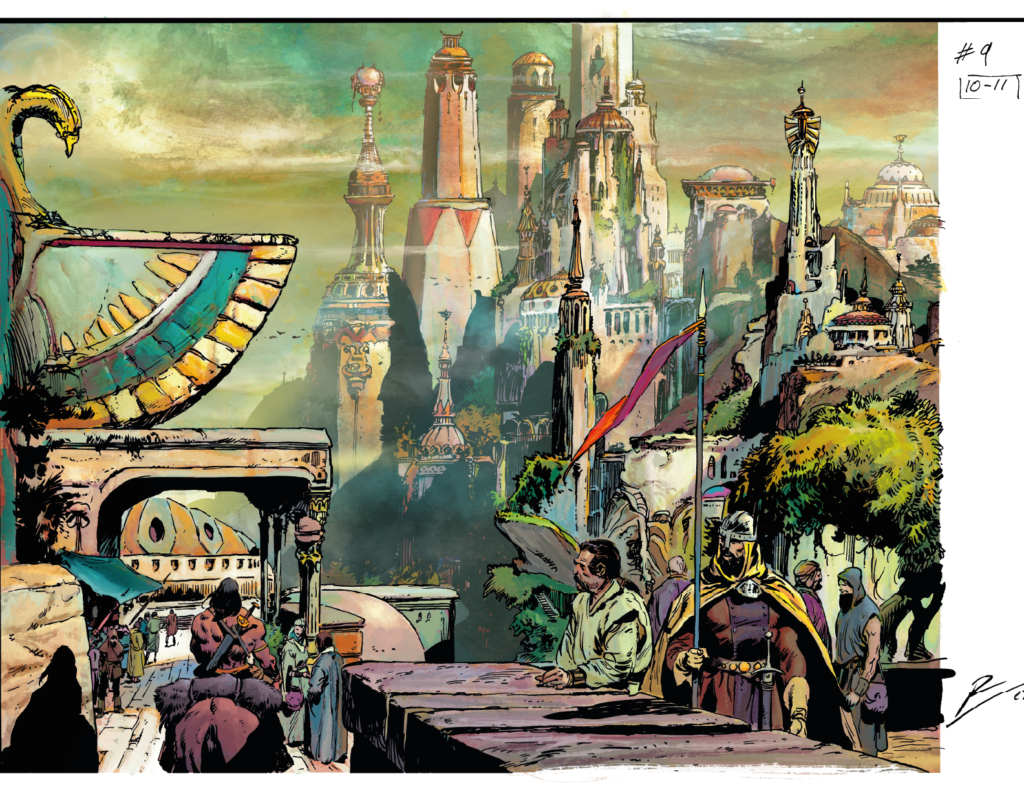
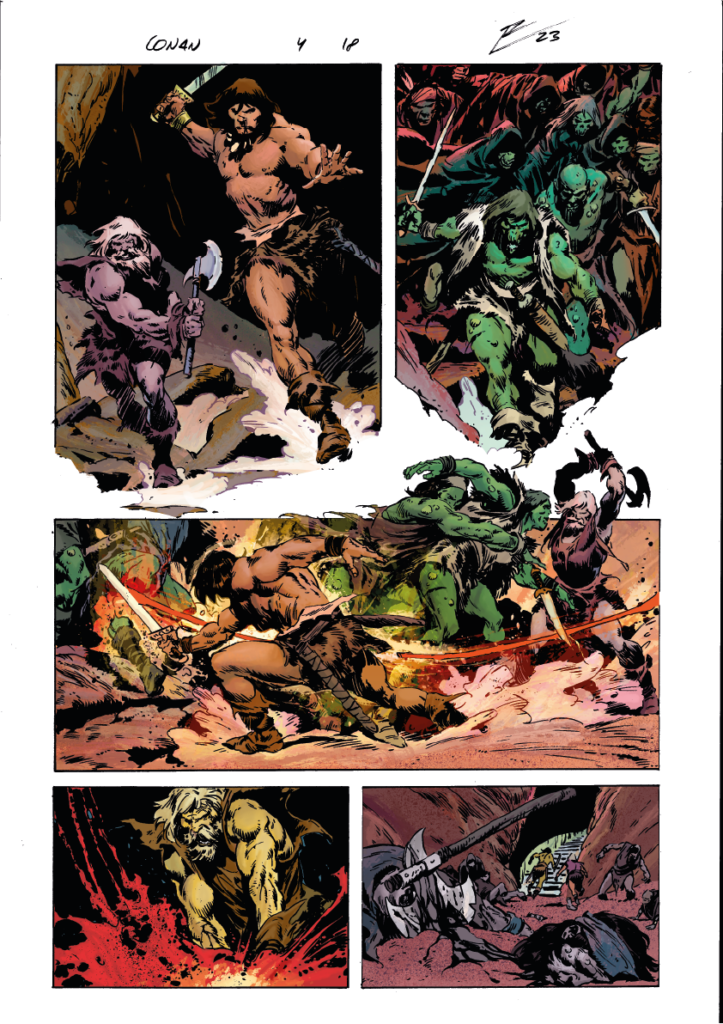
Think about the audacity of that opening move. Instead of playing it safe with a simple tavern brawl or caravan raid, Conan’s keepers went full cosmic, bringing together two of Howard’s greatest creations in a time-spanning epic. For those of us who’ve spent years explaining to people that Conan exists in a rich, interconnected mythology that spans millennia, this was vindication. Finally, a creative team that understood the scope of what they were working with.
And then there’s Thulsa Doom.
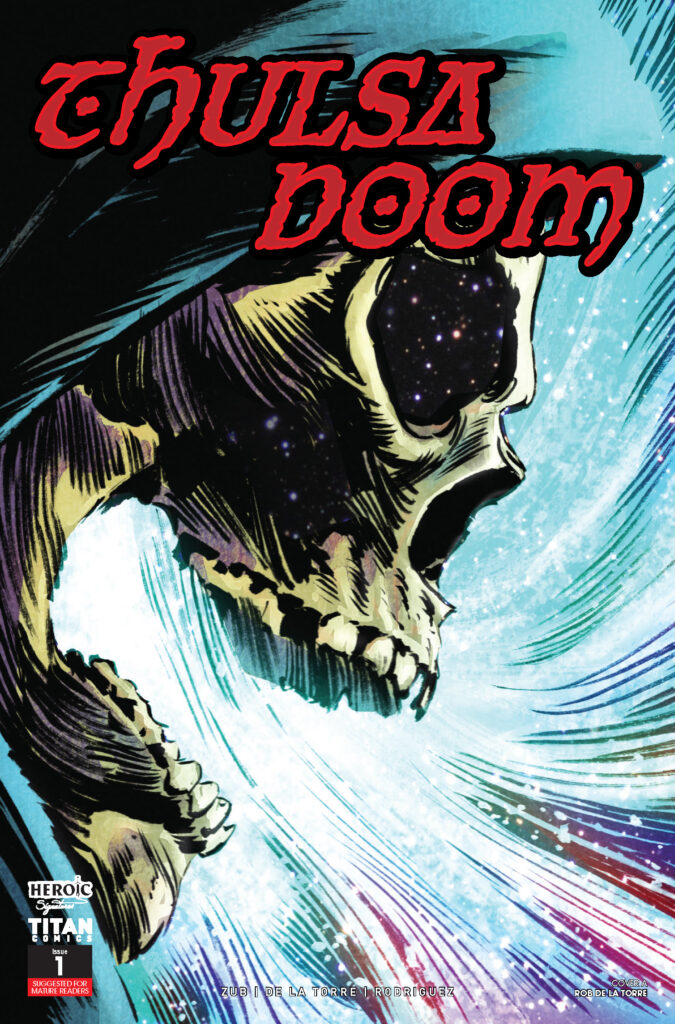
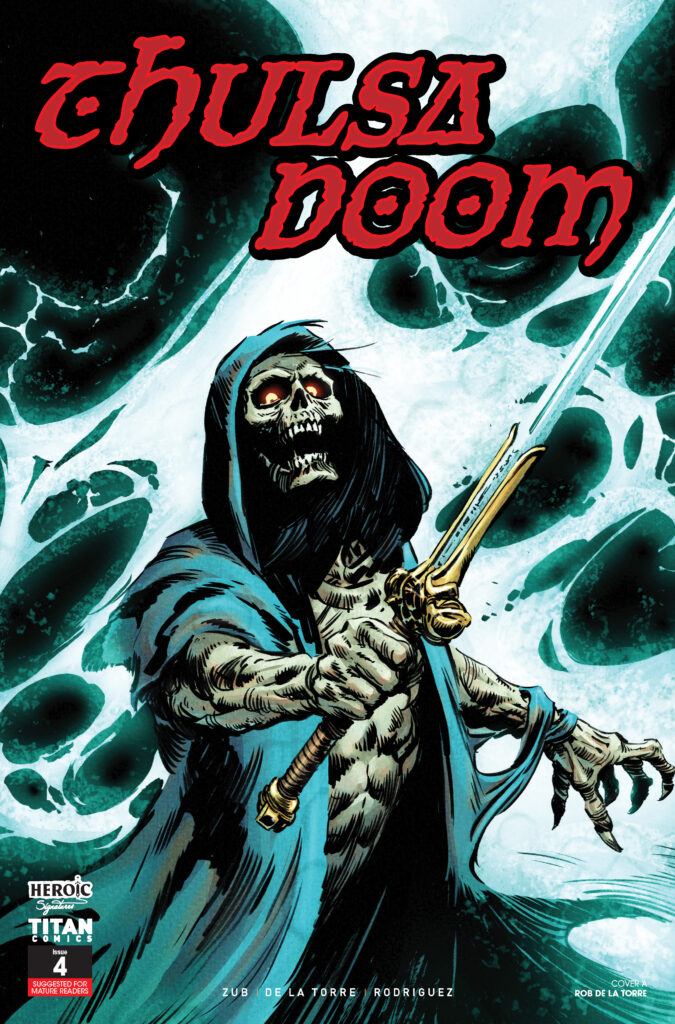
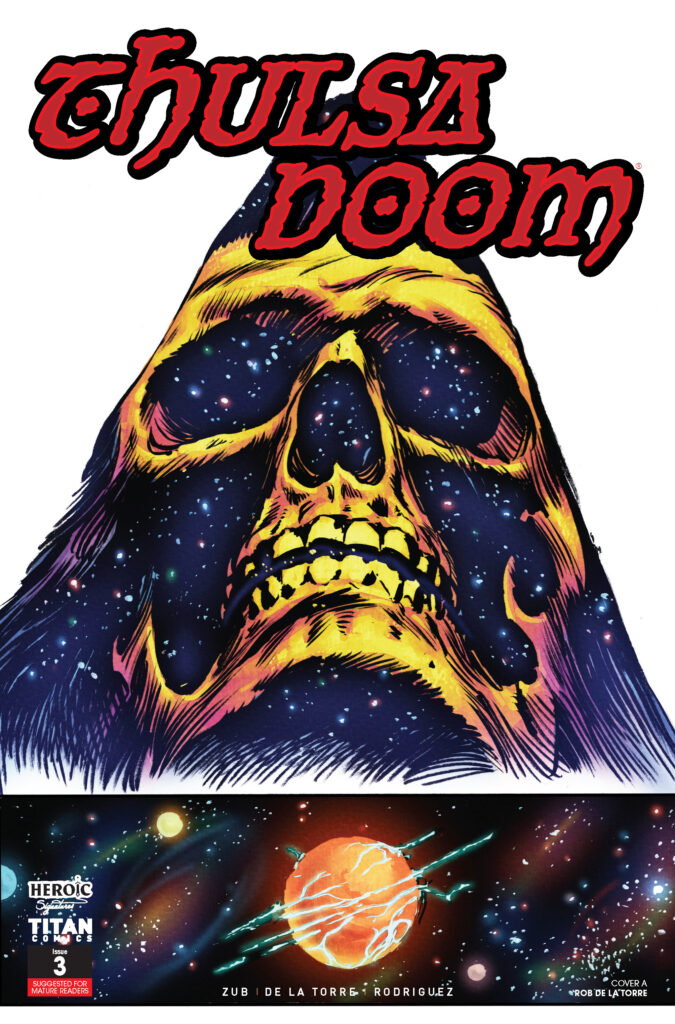
While the creative team went with Howard’s original skull-faced lich – the ur-necromancer who set the template for every undead sorcerer to follow – they weren’t above throwing in some clever winks to James Earl Jones’ iconic serpent-cult leader from the ’82 film. Issue #12’s climactic duel between Conan and a cosmically-empowered Doom was itself a mission statement rendered in spectacular full-page spreads and eye-catching typefaces. The artistic homages to Marvel’s classic 1970s Kull the Destroyer series were the cherry on top, showing a creative team that honored the entire lineage of these characters.
The Battle of the Black Stone
Between Years One and Two came something unprecedented in Conan’s 50+ year comics history: the character’s first-ever crossover event, the “Battle of the Black Stone”.



The four-issue miniseries (spinning out of Free Comic Book Day 2024) finally resolving the Black Stone mystery that had loomed over the entire first year.
But the event did more than just tie up loose ends. It reached all the way back to issue #4, finally explaining what happened to Brissa, the Pictish scout who disappeared early in the run. Set as a prequel to Howard’s “Beyond the Black River,” with Conan now stationed at Fort Tuscelan, the story connected seemingly disjointed plot threads.
Most significantly, “Battle of the Black Stone” launched what’s being called the “Howardverse.” The Black Stone’s influence rippled across time, pulling together Solomon Kane (the Puritan adventurer), Dark Agnes (the 16th-century swordswoman), and John Kirowan (the 1930s detective) and Conan the Barbarian. For the first time in comics, Howard’s heroes united against a common threat, establishing a framework for future crossovers.
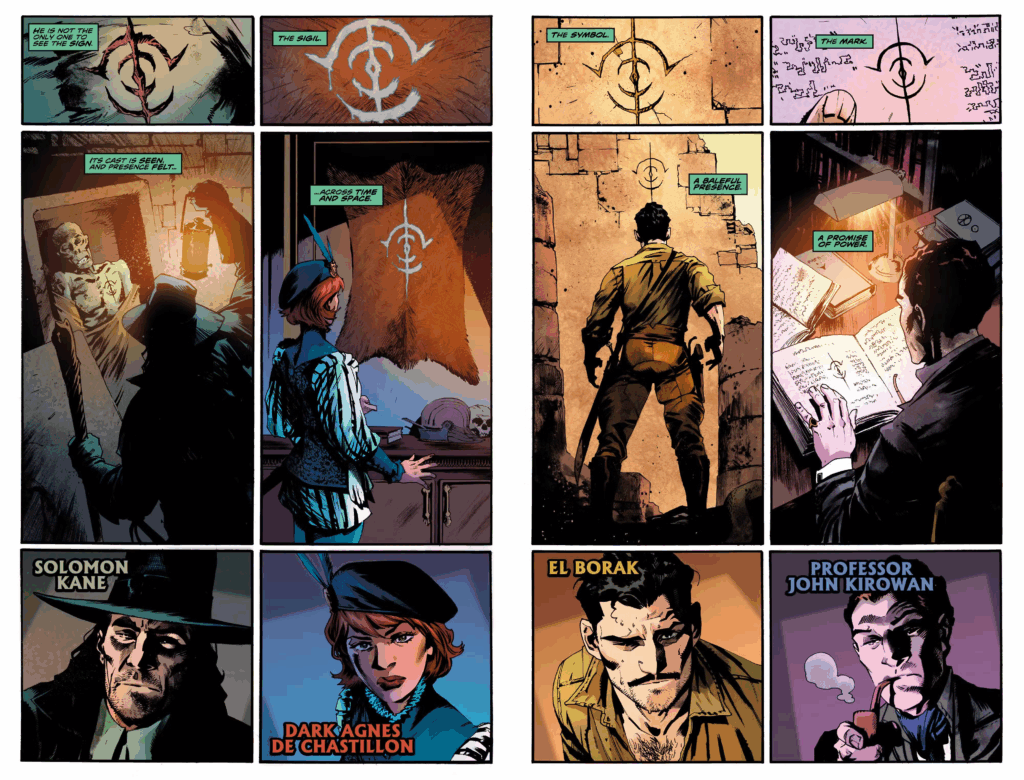
This acted as proof of concept. After decades of Conan being treated as an isolated property, here was evidence that his world was rich enough, complex enough, to support the kind of line-wide, interconnected storytelling typically reserved for superhero universes. The event acted as both a capstone for Year One’s foundational mysteries and a launchpad for an expanded approach to Howard’s entire literary legacy.
Year Two: The Serpent Strikes
If the first year established the series’ Howard bonafides, Year Two proved the creative team could evolve the mythology while staying true to its core. The overarching “Serpent” storyline, building from whispers to a full-scale cosmic threat, showed a level of narrative sophistication that elevated the entire enterprise.
Zula’s return in issue #20, in particular, was masterfully handled. No longer just a sidekick, this shapeshifting mystic from the Black Kingdoms emerged as Conan’s peer.
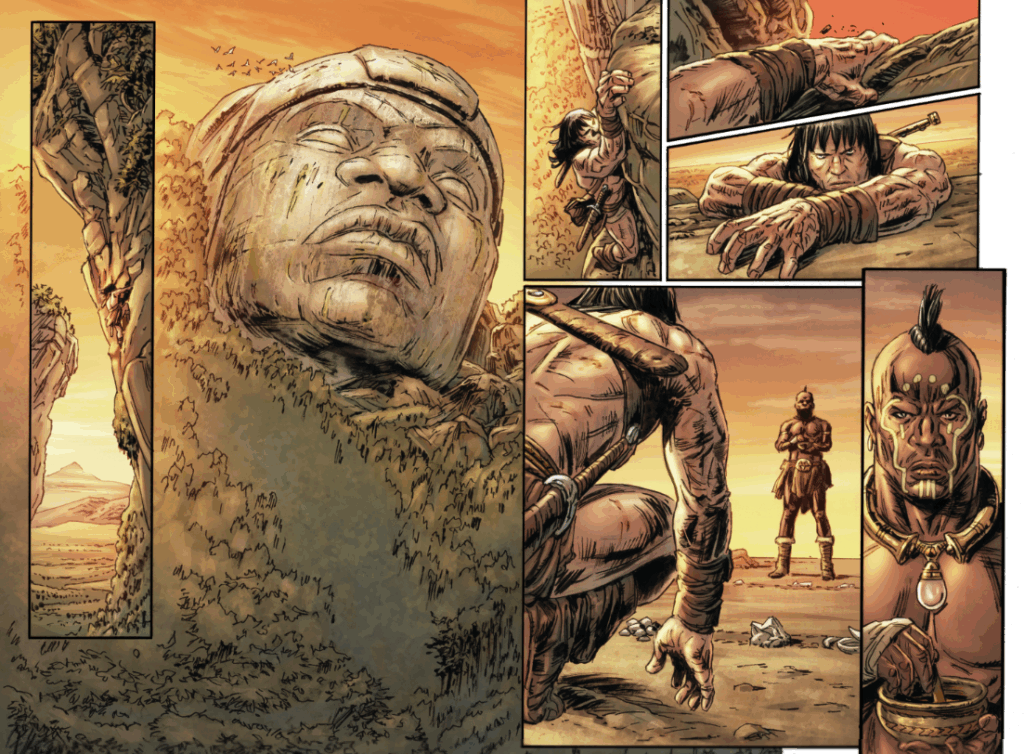
But the true game-changer came in issue #23 with the direct, face-to-face confrontation between Conan and Thoth-Amon. What made this meeting so special was that it was the definitive confrontation for a new generation. In Howard’s original tales, the two never meet. In most adaptations, Thoth-Amon lurks in the shadows as a distant threat. But Titan and Heroic SIgnatures delivered a meeting that feels both earned and essential.
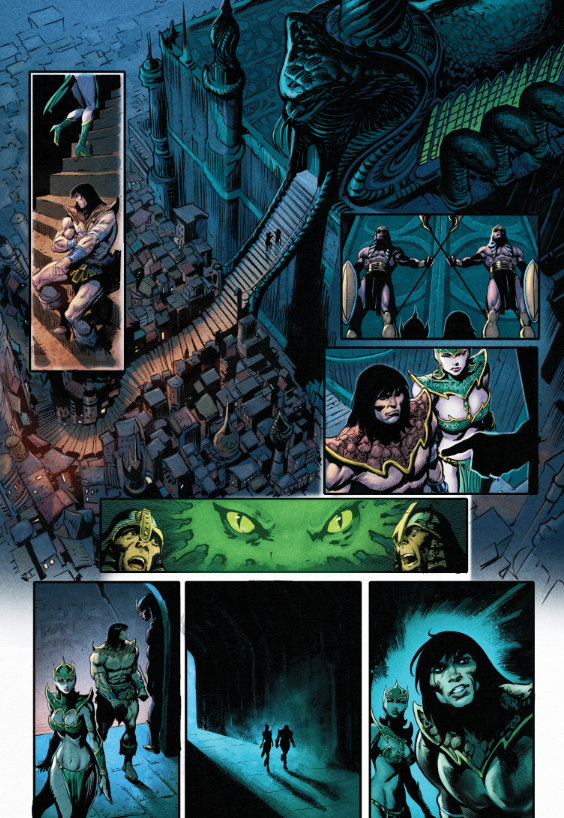
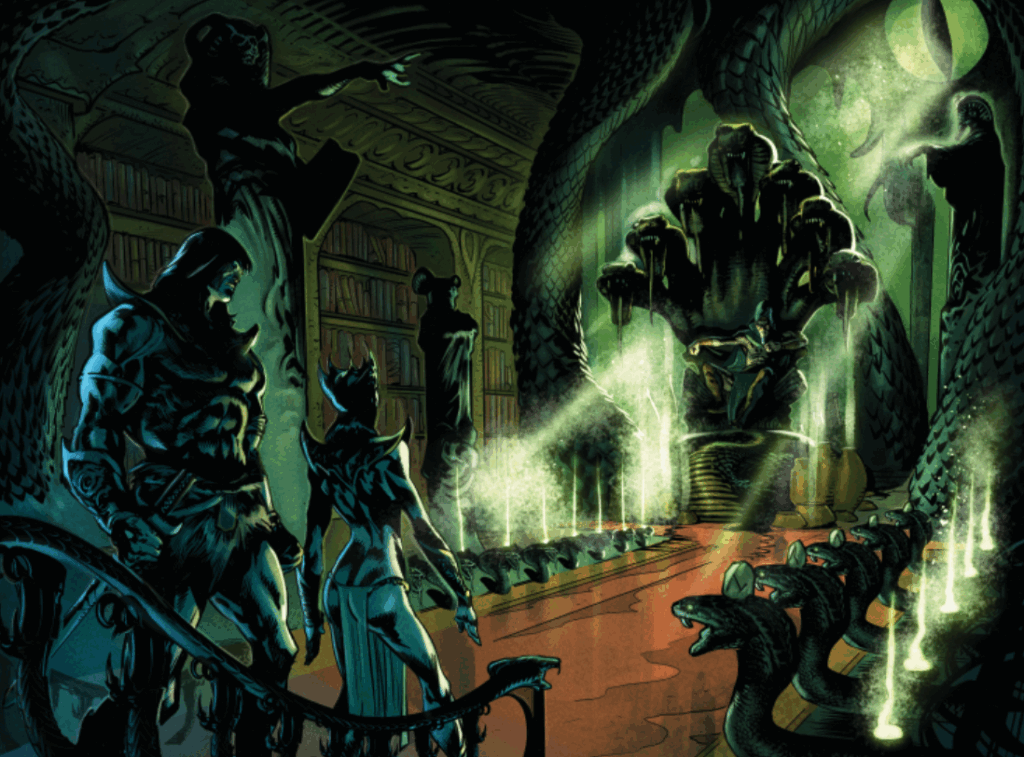
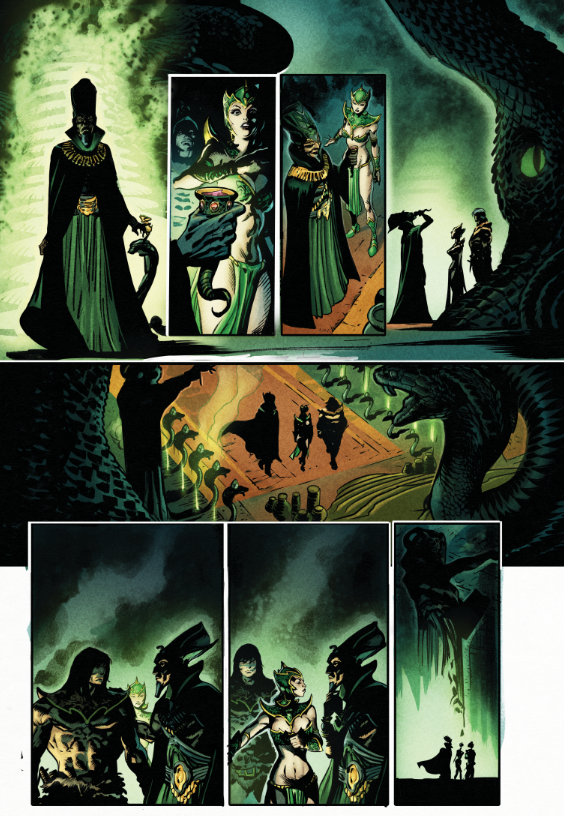
The various serpentine arcs – from “Fangs and Foolish Thieves” with its cursed Stygian daggers to “A Nest of Serpents” featuring horrific Man-Serpent breeding pits – built to “Scourge of the Serpent”, the second major comic event for Conan. Most impressive is that these arcs helped cement a cohesive Conan universe that rewarded dedicated readers while remaining accessible to newcomers.
The Creatives Behind This Renaissance
What makes this run truly special isn’t just the individual moments but the foundational elements supporting them.
Jim Zub’s writing has been nothing short of revelatory. Fans consistently praise him with variations of “He just gets it” – and they’re right. Zub has effortlessly channeled Howard’s voice, delivering that perfect blend of brutal action, melancholic poetry, and prehistoric grandeur that defines the best Conan tales.
The artistic direction has been equally crucial. Roberto De La Torre’s deliberately Buscema-inspired work created instant visual continuity with the classic Marvel era, while artists like Doug Braithwaite and Fernando Dagnino have maintained that “primal and energetic” aesthetic throughout.
And let’s not forget The Savage Sword of Conan revival. Bringing back the black-and-white magazine format – complete with its mature content and newspaper feel – was a statement that Conan is big enough, important enough, to support multiple formats and approaches simultaneously.
The Road Ahead – All Hail King Conan!
All of this has been building to the imminent issue #25 that delivers something truly special.
Alex Horley of World of Warcraft and Magic: The Gathering fame is delivering 30 pages of a fully painted Conan epic set during his time as King of Aquilonia and featuring a mysterious wanderer. This painted epic represents everything this Conan comic book run has accomplished: respect for the past, confidence in the present, and ambition for the future.
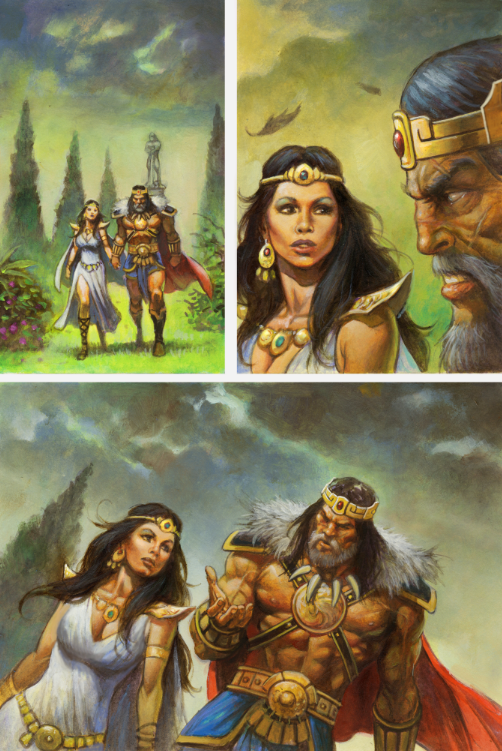
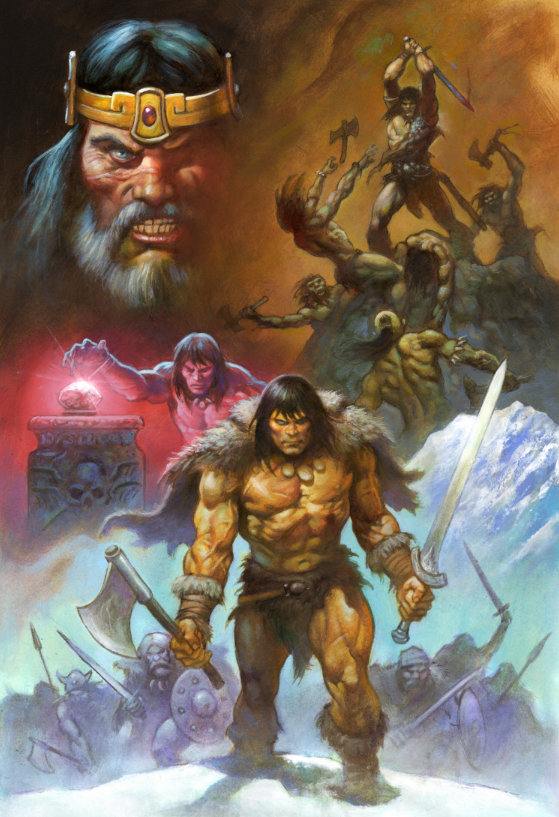
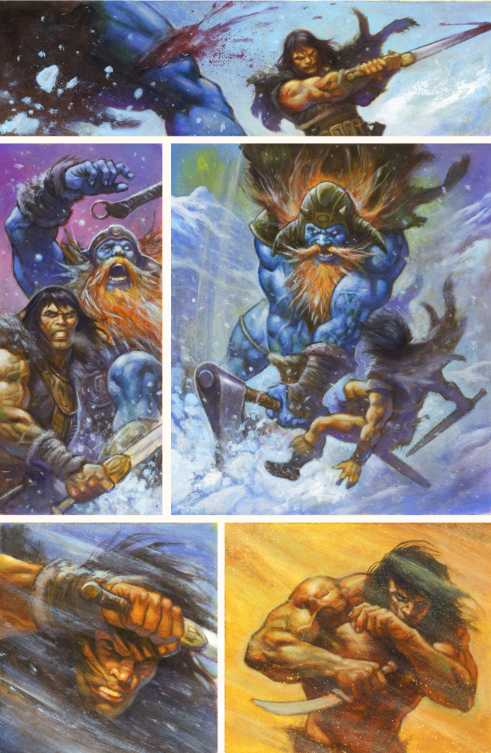
So, as we stand at this two-year mark, basking in the release of issue #25, it’s clear that Conan is right where he belongs: in Titan Comics’ and Heroic Signatures’ hands.
Here’s to two years of blood and thunder, sorcery and steel! Here’s to Jim Zub and every artist who’s brought these tales to life! Here’s to Titan Comics and Heroic Signatures for having the vision and courage to do this right! And here’s to every reader for demanding nothing less than the best for the legendary barbarian!
By Crom, if the first two years have been this good, imagine what lies ahead.
Now, let us drink to the dead and to the glorious battles ahead!

Lo Terry
In his effort to help Heroic Signatures tell legendary stories, Lo Terry does a lot. Sometimes, that means spearheading an innovative, AI-driven tavern adventure. In others it means writing words in the voice of a mischievous merchant for people to chuckle at. It's a fun time.


